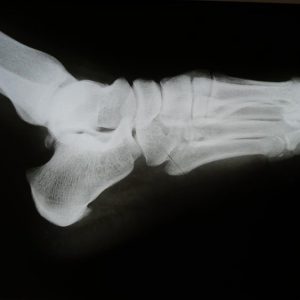
One of our readers has been experiencing pain in both Achilles tendons for the past year and a half. He is typically very physically active and runs many kilometers per week.
X-ray imaging showed calcifications at the insertion points of the tendon into the heel bone (better referred to as osteophytes), and subsequently, shockwave therapy was performed (a total of 5 therapeutic procedures), along with stretching and attempts at rest, all resulting in transient improvements.
Like in most similar cases, he seeks advice on whether to repeat shockwave therapy, or if there is any “laser” or similar treatment that could relieve his pain and allow him to continue his activities in the same way that led to his pain.
Osteophytes on the heel bone are not uncommon. We regularly find them in the older population, and more frequently in extremely physically active patients. They themselves are not a problem (unless they are exceptionally large), but rather a sign of bone adaptation to significant and prolonged physical stress. In this sense, they can only be surgically removed. NO FORM OF SHOCKWAVE THERAPY CAN “BREAK” THEM, but only reduce local pain. If this was not successful, then the reservoir of simple therapies is empty, and a more comprehensive diagnostic evaluation and subsequent therapy are needed.
If it is clear that these osteophytes are a reaction to stress, then it is important to assess where this stress is predominantly occurring in order to reduce it. Typically, we find a lack of adequate warm-up and sufficiently prolonged stretching after running, as well as other training errors that contribute to pain and need to be corrected. This is followed by a physical examination, which will assess whether there are any changes on the foot and lower extremity that increase stress and can be corrected with manual therapy, orthotics, or changes in training.
Once all of this has been done, sufficient time is needed for such changes to bring satisfactory results. In this case, the guidance of an experienced sports physiotherapist is crucial.
